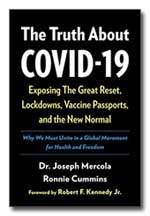 Autism used to occur in about 15 of every 10,000 births (1 in 667 children) but that number has risen until today more than 1 in every 68 children in general, and 1 in 42 boys is on the “autism spectrum.” See CDC report. Autism has gone from a rare disorder to a syndrome that is tragically common in the U.S.
Autism used to occur in about 15 of every 10,000 births (1 in 667 children) but that number has risen until today more than 1 in every 68 children in general, and 1 in 42 boys is on the “autism spectrum.” See CDC report. Autism has gone from a rare disorder to a syndrome that is tragically common in the U.S.
Autism is a spectrum disorder, so there is great variety in symptoms and severity, but the following characteristics are usually present:
- Difficulty with communication
- Difficulty relating to other people
- Difficulty making eye contact
- Repetitive behaviors
- Resistance to change
- Sensory problems: abnormal reactions to sound, light, touch, texture of food, etc.
- Poor digestive system, constipation, diarrhea
Some claim that there are the same number of autistic children as there have always been but that we are just better at identifying the problem. If this were true, it would mean that there would be hundreds of thousands of autistic adults – “Rainmen” – in our midst. It would also imply that parents are not capable of noticing when their child, who had been developing normally, suddenly loses his ability to speak or to relate to them.
Conventional medicine has little to offer the families of autistic children. However, many parents, physicians, and other professionals have used a wide variety of non-drug methods to help the children, and there have been impressive results. Nevertheless, both mainstream medicine and the government agencies responsible for dealing with these issues remain unconvinced.
The Diet Connection
The Autism Research Institute has reported that 56% of 899 families who had tried the Feingold diet found that it was helpful for their child. See ARI’s Parent Ratings of all Treatments.
While autism is extremely complex, and there may be multiple causes, a diet that removes harmful additives is an important piece of the puzzle. Sometimes we hear back from families whose child had been diagnosed as autistic, only to have the diagnosis dropped once they went on the Feingold Program; but for most families, nutrition is only a part of the answer.
More:
Following is a very short discussion of some of the research, and you can see more by visiting the links at the bottom of the page.
It has only been a relatively few years since the official cause of autism was the “refrigerator mother.” That was during the same period of time that asthma was considered the result of the “overbearing, dominating mother.” It does make one wonder what kind of mother “caused” the child with both asthma and autism, doesn’t it?
 Dr. Bernard Rimland was the first to reject the notion that autism was a psychiatric condition caused by a rejecting mother, and found that it is a biological disorder. He established a nonprofit organization as an international source of research and information for biomedical treatments in 1967. He passed away at the age of 78, November 21, 2006. “Dr. Rimland will go down in history as the person who ended the dark ages of autism and spearheaded the fight to bring hope and help to autistic children,” said Dr. Stephen M. Edelson, his successor at the helm of the Autism Research Institute.
Dr. Bernard Rimland was the first to reject the notion that autism was a psychiatric condition caused by a rejecting mother, and found that it is a biological disorder. He established a nonprofit organization as an international source of research and information for biomedical treatments in 1967. He passed away at the age of 78, November 21, 2006. “Dr. Rimland will go down in history as the person who ended the dark ages of autism and spearheaded the fight to bring hope and help to autistic children,” said Dr. Stephen M. Edelson, his successor at the helm of the Autism Research Institute.
In 1994, Dr. Rosemary Waring in England found that children with autism are deficient in an enzyme called phenol-sulphotransferase-P (PST). There were very low levels of PST in every child tested.
If you have a PST deficiency, it is harder to get rid of natural toxins (like salicylate) or phenolic additives (like food dyes) which require PST, and you would also have trouble coping with many of your own body chemicals (like neurotransmitters) which require PST to function correctly.
There could be many reasons why PST is deficient, but one that Waring suggested was sulfate starvation, since sulfate is the substrate from which PST is made. Apparently there is some difficulty creating sulfate from sulfur or sulfites available through foods. Some people report good results from epson salt (magnesium sulfate) baths. The baths provide sulfate absorbed through the skin, magnesium (which relaxes muscles) absorbed through the skin – and besides a warm bath is always soothing.
An interesting study (Harris 1998) also showed that salicylate suppresses the production of PST. Although the study authors consider this an advantage for control of cancer, it is obviously not an advantage if you don’t have much PST to begin with.
Dr. Cade (1999; 2000) reported in that abnormal peptides and antibodies to milk and wheat proteins were found in the urine of both autistic children and schizophrenic adults. A diet free of both these proteins resulted in improvement of all the schizophrenics and 81% of the autistic children. It is unusual in that before implementing the diet for the adults, he had them go through a dialysis procedure which removed the damaging proteins all at once. Whether that is normally necessary for results is not known, but might depend on how long such proteins normally circulate in the blood before being excreted naturally.
Dr. Shaw of the Great Plains Laboratory has found that children with autism often have abnormal fungal metabolites in their urine, as well as abnormally low cholesterol levels. He has developed a number of blood and urine tests specifically to help determine where the problems lie for the individual child.
Dr. Wakefield, a British gastroenterologist, found that the walls of the intestine of many autistic children are inflamed with the measles vaccine virus, causing what he named autistic enterocolitis. Because this involves the implied culpability of vaccine components, it has become extraordinarily controversial.
For those children to whom small sounds appear to be abnormally loud, causing them pain as well as difficulty in comprehending speech, auditory integration training holds out some hope. See the link to the Georgiana Institute below for more information.
Many children (and adults) with autism have symptoms overlapping ADHD. They are also prone to seizures and a variety of gastroenterological (GI) problems. The Feingold diet itself often helps some of these symptoms. Some doctors recommend starting the diet as a first intervention resulting in a “cleaner” diagnosis of remaining symptoms (those not related to diet) to address via other treatments. Parents have reported consistently that when the child is on the Feingold diet, other necessary treatments appear to work better. The reason for this is not yet known, but the Feingold Association is happy to be a piece of the puzzle.




















